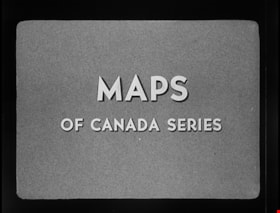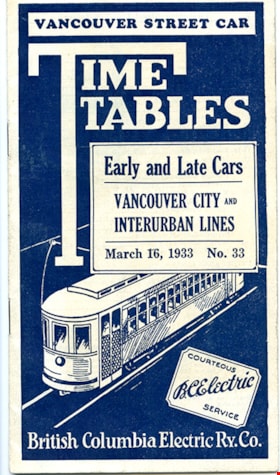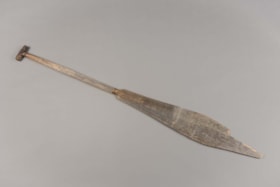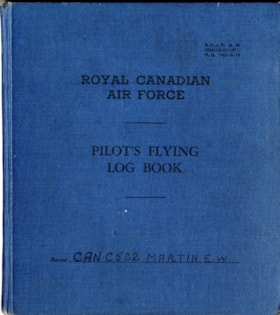More like 'John Yanko ploughing a field'
Narrow Results By
Creator
- Burnaby Village Museum 4
- Canada. Department of Mines and Technical Surveys. Geographical Branch 1
- Canadian National Railways 1
- Canadian Pacific Railway Company 1
- City of Winnipeg 1
- Damer, Eric 3
- Donoahue, J. 1
- Hopkins, D. 1
- Library and Archives Canada 1
- Manitoba Hydro 1
- Moller, Hans 1
- National Film Board of Canada 1
Person / Organization
- Alpha Secondary School 1
- Brentwood Park School 1
- Brentwood Shopping Centre 1
- British Columbia Electric Railway Company 1
- British Columbia Hydro and Power Authority 1
- British Columbia Organization to Fight Racism 1
- Burnaby School Board 1
- Burquest 1
- Canadian Farmworkers Union 1
- Chouhan, Raj 1
- City of Burnaby 1
- Corsbie, Joseph Hardcastle-Cumberland "Joe" 1
hand maul
https://search.heritageburnaby.ca/link/museumartifact3392
- Repository
- Burnaby Village Museum
- Accession Code
- BV988.6.1
- Description
- Flat topped stone maul.
- Subjects
- Persons
- Indigenous peoples - British Columbia
- Woodworking Tools and Equipment
- Woodworking Tools and Equipment - Maul
Images
Documents
hand maul
https://search.heritageburnaby.ca/link/museumartifact3393
- Repository
- Burnaby Village Museum
- Accession Code
- BV988.6.2
- Description
- Flat topped stone maul, broken
- Subjects
- Persons
- Indigenous peoples - British Columbia
- Woodworking Tools and Equipment
- Woodworking Tools and Equipment - Maul
Images
Documents
hand maul
https://search.heritageburnaby.ca/link/museumartifact15555
- Repository
- Burnaby Village Museum
- Accession Code
- HV983.32.13
- Description
- Nipple topped stone maul. Nipple topped stone maul. It has a crack through the entire shaft and the two halves look of different colour and stone type. There is a large chip missing along the crack.
- Object History
- The donor was of European decent and was given this maul by an unidentified person. In general, hand mauls are used in woodworking todrive antler wedges or spreading sticks into logs and split planks. They were also used in combination with chisels for detail work. Their presence at an archeological site is viewed as evidence of long term habitations. They are associated with house building, canoe building, housepost and welcome figure carving. Nipple top hand mauls are identified as Marpole Culture (400 BC - 400 AD).
- Country Made
- Canada
- Province Made
- British Columbia
- Culture
- First Nations
- Subjects
- Persons
- Indigenous peoples - British Columbia
- Woodworking Tools and Equipment
- Woodworking Tools and Equipment - Maul
Images
Documents
hand maul
https://search.heritageburnaby.ca/link/museumartifact34041
- Repository
- Burnaby Village Museum
- Accession Code
- BV991.26.1
- Description
- Conical topped stone maul; damaged area on one side; broken area at bottom edge.
- Object History
- Maul was found in the late 1920s by Joseph Theodore Dorman on his property on Cliff Avenue, between Halifax and Broadway. In general, hand mauls are used in woodworking todrive antler wedges or spreading sticks into logs and split planks. They were also used in combination with chisels for detail work. Their presence at an archeological site is viewed as evidence of long term habitations. They are associated with house building, canoe building, housepost and welcome figure carving. Nipple top hand mauls are identified as Marpole Culture (400 BC - 400 AD).
- Country Made
- Canada
- Province Made
- British Columbia
- Subjects
- Persons
- Indigenous peoples - British Columbia
- Woodworking Tools and Equipment
- Woodworking Tools and Equipment - Maul
Images
Documents
hand maul
https://search.heritageburnaby.ca/link/museumartifact34042
- Repository
- Burnaby Village Museum
- Accession Code
- BV991.26.2
- Description
- Nipple topped stone maul. There is a damaged area on one side and the bottom edge is badly chipped. There are blackish oily stains on the side of the maul.
- Object History
- Was found in the late 1920s by Joseph Theodore Dorman on his property on Cliff Avenue, between Halifax and Broadway.
- Country Made
- Canada
- Province Made
- British Columbia
- Culture
- First Nations
- Subjects
- Persons
- Indigenous peoples - British Columbia
- Woodworking Tools and Equipment
- Woodworking Tools and Equipment - Maul
Images
Documents
hand maul
https://search.heritageburnaby.ca/link/museumartifact44533
- Repository
- Burnaby Village Museum
- Accession Code
- BV002.37.6
- Description
- Hand maul, stone; fragment, no top.
- Object History
- Donor's father found the maul in 1946-1947 when excavating a lot at 4203 Norfolk Street. The lot was kitty corner to Schou Street School.
- Subjects
- Persons
- Indigenous peoples - British Columbia
- Woodworking Tools and Equipment
- Woodworking Tools and Equipment - Maul
- Archeological Specimen
- Geographic Access
- Norfolk Street
Images
Documents
hand maul
https://search.heritageburnaby.ca/link/museumartifact44853
- Repository
- Burnaby Village Museum
- Accession Code
- BV002.57.1
- Description
- Nipple topped stone maul. It has a pointed tip and a slight indentation on side of base. There is adhesive residue on bottom of base.
- Object History
- The donor inherited this artifact from his mother, Katherine Maude (Kitty) Peers, who inherited them from her father, Louis Claude Hill. The artifacts were found on his farm, Brookfield Farm, at Douglas Road and Sperling Avenue (now site of Burnaby Village Museum). In general, hand mauls are used in woodworking todrive antler wedges or spreading sticks into logs and split planks. They were also used in combination with chisels for detail work. Their presence at an archeological site is viewed as evidence of long term habitations. They are associated with house building, canoe building, housepost and welcome figure carving. Nipple top hand mauls are identified as Marpole Culture (400 BC - 400 AD).
- Subjects
- Persons
- Indigenous peoples - British Columbia
- Woodworking Tools and Equipment
- Woodworking Tools and Equipment - Maul
- Archeological Specimen
- Historic Neighbourhood
- Burnaby Lake (Historic Neighbourhood)
Images
Documents
hand maul
https://search.heritageburnaby.ca/link/museumartifact44854
- Repository
- Burnaby Village Museum
- Accession Code
- BV002.57.2
- Description
- Conical topped stone maul; damaged by a plow.
- Object History
- The donor inherited this artifact from his mother, Katherine Maude (Kitty) Peers, who inherited them from her father, Louis Claude Hill. The artifacts were found on his farm, Brookfield Farm, at Douglas Road and Sperling Avenue (now site of Burnaby Village Museum).
- In general, hand mauls are used in woodworking todrive antler wedges or spreading sticks into logs and split planks. They were also used in combination with chisels for detail work. Their presence at an archeological site is viewed as evidence of long term habitations. They are associated with house building, canoe building, housepost and welcome figure carving. Flat and conical topped hand mauls are identified as Gulf of Georgia Culture (400 AD - 1800).
- Subjects
- Persons
- Indigenous peoples - British Columbia
- Woodworking Tools and Equipment
- Woodworking Tools and Equipment - Maul
- Archeological Specimen
- Historic Neighbourhood
- Burnaby Lake (Historic Neighbourhood)
Images
Documents
Interview with Ellen and Bill Schwartz
https://search.heritageburnaby.ca/link/museumdescription19602
- Repository
- Burnaby Village Museum
- Date
- [1969-2023] (interview content), interviewed 15 May 2023
- Collection/Fonds
- Burnaby Village Museum fonds
- Description Level
- Item
- Physical Description
- 2 sound recordings (wav) (68 min., 52 sec.) + 1 sound recording (mp3) (68 min., 53 sec.)
- Scope and Content
- Item consists of a recording of an oral history interview with Ellen and Bill Schwartz conducted by Burnaby Village Museum Registrar and Researcher, Eric Damer. 00:00-16:47 Bill and Ellen share where they were born, grew up and went to school as citizens of the United States and how they met in Pe…
- Repository
- Burnaby Village Museum
- Collection/Fonds
- Burnaby Village Museum fonds
- Series
- Museum Oral Histories series
- Subseries
- Many Voices Project Interviews subseries
- Description Level
- Item
- Physical Description
- 2 sound recordings (wav) (68 min., 52 sec.) + 1 sound recording (mp3) (68 min., 53 sec.)
- Material Details
- Interviewer: Eric Damer Interviewees: Ellen and Bill Schwartz Location of Interview: Burnaby Village Museum Interview Date: May 15, 2023 Total Number of tracks: 2 Total Length of all Tracks: 01:08:52 Digital master recordings (wav) were recorded onto two separate audio tracks, edited and merged together and converted to mp3 for access on Heritage Burnaby Photograph information: Bill and Ellen Schwartz.
- Scope and Content
- Item consists of a recording of an oral history interview with Ellen and Bill Schwartz conducted by Burnaby Village Museum Registrar and Researcher, Eric Damer. 00:00-16:47 Bill and Ellen share where they were born, grew up and went to school as citizens of the United States and how they met in Pennsylvania the 1970s. Bill and Ellen explain how in the 1970s, they were discouraged about the current politics in the United States under the Nixon administration and how they were inspired by the “back to the land” ideals, rejecting materialism and wanting an alternative lifestyle. With these ideals in mind, they recall how in 1972 they and a few other friends decided to leave the United States, move to British Columbia with the goal of buying land in the Okanagan or Kootenay region and starting a new lifestyle for themselves. Bill and Ellen recollect how they purchased 20 acres of land in Galena Bay in the Kootenays and how they lived in the area off and on until the early 1980s. They describe how they cleared three acres of land, built a cabin, put in a garden, chicken coop and honey bees. With the challenges of the isolated location and no access to electricity they explain how they decided that they had to live elsewhere in order to make a living. Ellen talks about working as a special education teacher in Revelstoke and Slocan and how Bill obtained his teaching certificate while they lived in Nelson. Bill and Ellen describe themselves as environmentalists and of how they both became active Provincial environmentalists during the construction of the Revelstoke Dam. Bill talks about getting work with the “Energy Van” program talking about energy conservation, renewable energy and recycling. They explain how after their first child was born in 1980, they returned to Galena Bay for about a year and a half until Bill was offered a job with the Department of Energy Conservation which lead them to move to Vancouver. 16:48 – 22:46 Bill and Ellen describe their first few years of living in Vancouver and at University of British Columbia while Ellen completed her master’s degree in creative writing. During this time, they had their second child. They recall how in 1988 how they purchased a house in Burnaby, selecting to live in the Deer Lake neighbourhood. They talk about the benefits of the neighbourhood including; a French immersion school for their children, proximity to the trails around Deer Lake and having transit close by. 22:47 – 33:55 Bill and Ellen talk about their consulting business “Polestar Communications”. A Burnaby based communications consulting firm composed of three people, Ellen and Bill and colleague Richard Banner. They describe how their business got started and some of the projects that they’ve worked on including; BC Hydro’s Power Smart Program, financial literacy curriculum that was introduced in B.C. schools and reports for the Province of British Columbia. Ellen and Bill convey how Bill has been a very active member with the City of Burnaby Environment Committee, the Steering Committee to develop a sustainable environmental strategy for Burnaby, how he’s been awarded for his contributions in coaching youth sports and other areas in which they have both volunteered. 33:56 – 43:07 Ellen describes how she got started in writing educational resources about the environment and how since she completed grad school in 1984, she’s published nineteen books. Ellen conveys how her first book was published and sold to the Province of British Columbia as part of the B.C. educational curriculum on the environment. Ellen talks about some of the children’s books that she’s written and published with themes including; social justice, the labour movement and racism in sports. Ellen describes some of her books and the research that she’s done. 43:08 – 51:04 Ellen and Bill Schwartz reflect on what they like about living in Burnaby. They talk about the benefits of their neighbourhood including; performances at the Shadbolt Centre for the Arts, the Burnaby Blues and Roots Festival, the Burnaby Art Gallery and Deer Lake as well as having access to parks and community centres in Burnaby. 51:05-56:36 Bill and Ellen reflect on their involvement in the Jewish community, considering themselves non-secular Jews. Ellen talks about how they were involved with “Burquest” a Jewish Community Association and how they often observe some of the Jewish holidays including Hanukah and traditions including the Jewish coming of age ritual, bar mitzvah (masc.) and bat mistvah (fem.). Ellen mentions her involvement with the “Jone Betty Stuchner Oy Vey! Funniest Children’s book Award” where she acts a judge and her involvement with the Jewish Book festival and that she is a recipient of the Jewish Book award. 56:37 – 1:08:53 Bill and Ellen reflect on their 35 years living in Burnaby and how they’ve seen it change. They talk about the increased development and density in the city, how they are troubled by a lack of low income housing, the benefits and importance of public transportation and preservation of green space including Burnaby parks.
- History
- Interviewees' biographies: Ellen Schwartz was born in Washington, DC, (1950) but grew up in New Jersey. She attended the Universities of Chicago and Wisconsin before moving to a farm in Pennsylvania, where she met her future husband Bill Schwartz. Bill Schwartz grew up in and around Philadelphia (b. 1947), and attended Pennsylvania State University. After travelling, and discouraged with life in eastern America, he and Ellen decided that British Columbia held better prospects. Bill and Ellen quit their jobs in 1972 and moved to the Kootenay region where they adopted a “back to the land” lifestyle, a very new experience for both of them. After eight years of modest success, and occasional work in nearby towns, they opted to return to Vancouver where Bill had work and where they could raise a family more easily. They rented in Vancouver for a few years before moving to family housing at UBC, while Ellen studied creative writing. Bill founded a communications and writing company, and in 1988 they purchased a home in Burnaby. Ellen launched a new career as a writer, mainly for children young adults. Both were active in their careers, raising a family, and participating in local social and political activities. Interviewer biography: Eric Damer is a Burnaby Village Museum Interpreter, Museum Registrar, Researcher and Blacksmith. Eric pounded hot steel for the first time in 1977 in junior high. Fifteen years later, he joined Burnaby Village Museum where he has smithed for three decades. He also provides historical research for museum exhibits and special projects. Outside the museum, Eric is a social historian with a special interest in educational history.
- Creator
- Burnaby Village Museum
- Subjects
- Education
- Environmental Issues
- Environmental Issues - Environmental Protection
- Geographic Features
- Geographic Features - Parks
- Housing
- Occupations
- Occupations - Entrepreneurs
- Occupations - Writers
- Persons - Volunteers
- Persons - Jewish Canadians
- Social Issues
- Social Issues - Racism
- Religions
- Religions - Judaism
- Names
- Schwartz, William "Bill"
- Schwartz, Ellen
- City of Burnaby
- Polestar Communications
- British Columbia Hydro and Power Authority
- Responsibility
- Damer, Eric
- Accession Code
- BV023.16.6
- Access Restriction
- No restrictions
- Reproduction Restriction
- No known restrictions
- Date
- [1969-2023] (interview content), interviewed 15 May 2023
- Media Type
- Sound Recording
- Historic Neighbourhood
- Burnaby Lake (Historic Neighbourhood)
- Planning Study Area
- Burnaby Lake Area
- Notes
- Title based on contents of item
- Transcription available on Heritage Burnaby
Images
Documents
Audio Tracks
Interview with Ellen and Bill Schwartz, [1969-2023] (interview content), interviewed 15 May 2023
Interview with Ellen and Bill Schwartz, [1969-2023] (interview content), interviewed 15 May 2023
https://search.heritageburnaby.ca/media/hpo/_Data/_BVM_Sound_Recordings/Oral_Histories/2023_0016_0006_003.mp3chisel
https://search.heritageburnaby.ca/link/museumartifact38885
- Repository
- Burnaby Village Museum
- Accession Code
- BV998.11.1
- Description
- Chisel shaped tool, wedge-shaped; mainly green with white and brown fissures throughout. One side has elevated edge, possibly for attaching to handle.
- Object History
- The stone chisel was found by Archie Card, ca 1930 in the yard of the Card family home at 329 Richmond Street (later renamed Elwell) in Burnaby.
Images
Documents
Mountain Goat Horn Spoon
https://search.heritageburnaby.ca/link/museumartifact30018
- Repository
- Burnaby Village Museum
- Accession Code
- HV973.73.177
- Description
- Horn spoon with fine carving on the narrow handle. Material is very dark.
- Object History
- Along the Northwest Coast, in general, undecorated spoons of wood and horn were used in everyday life, while more elaborately carved versions were used on special occasions. Horn spoons were often passed down in families as heirlooms, such spoons are generally darker in colour than those of recent manufacture. The bowls of these spoons are too large to place in the mouth, so food is sipped from the sides or the end.
- The bowl of the mountain goat horn spoon is made from the larger part of the horn, at the base. The handle is made from the tip. It is straightened out by steaming in a wooden mould and then scored out inside as part of the shaping process
- Country Made
- Canada
- Province Made
- British Columbia
- School/Style
- Coast Salish
- Culture
- Haida
Images
Documents
weight
https://search.heritageburnaby.ca/link/museumartifact44855
- Repository
- Burnaby Village Museum
- Accession Code
- BV002.57.3
- Description
- Net weight, round, stone, doughnut-shaped with hole in the middle.
- Object History
- The donor inherited this artifact from his mother, Katherine Maude (Kitty) Peers, who inherited them from her father, Louis Claude Hill. The artifacts were found on his farm, Brookfield Farm, at Douglas Road and Sperling Avenue (now site of Burnaby Village Museum).
- Subjects
- Persons
- Indigenous peoples - British Columbia
- Weights and Measurements Tools and Equipment
- Archeological Specimen
- Historic Neighbourhood
- Burnaby Lake (Historic Neighbourhood)
Images
Documents
weight
https://search.heritageburnaby.ca/link/museumartifact44856
- Repository
- Burnaby Village Museum
- Accession Code
- BV002.57.4
- Description
- Net weight, round, stone, doughnut-shaped with hole in the middle. Made of volcanic stone.
- Object History
- The donor inherited this artifact from his mother, Katherine Maude (Kitty) Peers, who inherited them from her father, Louis Claude Hill. The artifacts were found on his farm, Brookfield Farm, at Douglas Road and Sperling Avenue (now site of Burnaby Village Museum).
- Subjects
- Persons
- Indigenous peoples - British Columbia
- Weights and Measurements Tools and Equipment
- Archeological Specimen
- Historic Neighbourhood
- Burnaby Lake (Historic Neighbourhood)
Images
Documents
Interview with Honourable Raj Chouhan
https://search.heritageburnaby.ca/link/museumdescription19349
- Repository
- Burnaby Village Museum
- Date
- [1957-2022] (interview content), interviewed 2 Dec. 2022
- Collection/Fonds
- Burnaby Village Museum fonds
- Description Level
- Item
- Physical Description
- 1 sound recording (wav) + 1 sound recording (mp3) (49 min., 21 sec.)
- Scope and Content
- Item consists of an oral history interview with Honourable Raj Chouhan conducted by Burnaby Village Museum Assistant Curator, Kate Petrusa. Raj Chouhan shares his ancestral background and personal experiences immigrating to Canada from India in 1973 and living and working in Canada as an immigrant…
- Repository
- Burnaby Village Museum
- Collection/Fonds
- Burnaby Village Museum fonds
- Series
- Museum Oral Histories series
- Description Level
- Item
- Physical Description
- 1 sound recording (wav) + 1 sound recording (mp3) (49 min., 21 sec.)
- Material Details
- Interviewer: Kate Petrusa Interviewee: Honourable Raj Chouhan Location of Interview: Residence of Honourable Raj Chouhan Interview Date: December 2, 2022 Total Number of tracks: 1 Total Length of all Tracks: (00:49:21) Digital master recording (wav) was converted to mp3 for access on Heritage Burnaby
- Scope and Content
- Item consists of an oral history interview with Honourable Raj Chouhan conducted by Burnaby Village Museum Assistant Curator, Kate Petrusa. Raj Chouhan shares his ancestral background and personal experiences immigrating to Canada from India in 1973 and living and working in Canada as an immigrant and the organizations that he became involved with. Honourable Raj Chouhan recalls how he arrived in Burnaby with his family in 1973 and that his family worked in farming. Chouhan imparts his first hand experiences as a new immigrant working as a labourer in the farming industry and describes the unsafe and unfair working conditions that he and migrant workers faced. Chouhan conveys how this experience lead him to become an activist for better working conditions for migrant workers. This lead Chouhan and others to form the Canadian Farm Workers Union in 1980. Chouhan recollects his experiences flying from India to Canada with his wife, his first impressions after arriving in Vancouver and driving to Burnaby and what he brought with him. Chouhan explains his connections to Burnaby. Members of Chouhan's wife's family immgrated to Canada in 1957 and his wife and her three brothers joined them in 1970. Chouhan's father in law, Hardial Singh Grewal immigrated in 1957 and became president of the Sikh temple in New Westminster. Hardial Singh Grewal worked in a lumber mill in Vancouver and eventually bought a house in Burnaby. Chouhan married to his wife at the Sikh temple in New Westminster and lived in Burnaby for a period before moving to New Westminster where they could find more affordable housing. Chouhan shares that he first worked as a farm labourer in Abbotsford and then found a job in the sawmill which paid more. Chouhan describes the extreme racism and discrimination that he and other immigrants faced which lead to the formation of the British Columbia Organization to Fight Racism under the leadership of Dr. Hari Prakash Sharma. Chouhan describes this organization that he was a part of and the Canadian Farm Workers Union that were both formed in Burnaby. Chouhan shares that he moved to Victoria in 1988 to serve on the Hospital Employee's Union and moved back to the mainland in 1993 and returned to Burnaby in 2001. Chouhan reflects on the history of South Asian immigration in Canada, how many of the migrants settled in the lower mainland including Burnaby, New Westminster and Vancouver establishing temples in Vancouver and New Westminster which became the centre for the South Asian community. He conveys how earlier occupations were limited to farming and millwork and how over time employment opportunities and education have broadened but there is still work to do. He imparts how second generation Canadians’ experiences differ from first generations providing examples of his own daughters’ and the occupations that they are working in. Chouhan provides his insights into the South Asian Canadian experience imparting “We make history every day and that history needs to be recorded and learned from.."... “People from different communities, different backgrounds who lived in Burnaby have contributed so much and South Asians are just like another community and participated in all aspects of social life, cultural, religious, economy. I'm so proud of our community, our forefathers who had that vision to fight for our rights. I'm inspired by people who struggled so much to gain basic rights, like the right to vote". Chouhan refers to these first immigrants as “Gadri Babbas” “revolutionary old people” who were also the main motivation that lead to India becoming a free country in 1947 and for fighting for basic rights here in Canada and how they made their contributions for future generations. Chouhan expresses what he imparts to students “Do not forget your past... if you remember your past then you are much more knowledgeable. Then we know what we need for the future. If we don't know the past, we don't know what the future is going to be like. To make a better future, you have to learn from the past and improve".
- History
- Interviewee biography: Honourable Raj Chouhan was born in the city of Ludhiana in the Province of Punjab in India and immigrated to Canada in 1973. After arriving in Canada, Raj's family settled in Burnaby. Raj grew up in Burnaby and attended schoool. Honourable Raj Chouhan was elected to the Legislative Assembly of British Columbia as the MLA for Burnaby-Edmonds in 2005 and was re-elected in 2009, 2013, 2017 and 2020. He was elected Speaker of the Legislative Assembly on December 7, 2020. Honourable Chouhan is the founding president of the Canadian Farmworkers Union and the British Columbia Organization to Fight Racism and has served as a director of the Hospital Employees' Union, the Labour Relations Board of B.C. and the Arbitration Bureau of B.C. Honourable Chouhan has also served as the Vice President of B.C. Human Rights Defenders since 2003 and has taught courses in Human Rights, the B.C. Labour Code and Collective Bargaining since 1987. Interviewer biography: Kate Petrusa is the Assistant Curator at the Burnaby Village Museum. In her role, she manages all aspects of the collection – including caring for physical artifacts and making their digital counterpart accessible. Before coming to Burnaby Village Museum in 2019, Kate has worked at several Museums around the Lower Mainland as a Curator and contractor since 2013.
- Creator
- Burnaby Village Museum
- Subjects
- Persons - South Asian Canadians
- Social Issues
- Social Issues - Racism
- Occupations - Agricultural Labourers
- Migration
- Organizations - Unions
- Rights
- Rights - Human Rights
- Agriculture
- Agriculture - Farms
- Government - Provincial Government
- Government
- Names
- Chouhan, Raj
- British Columbia Organization to Fight Racism
- Sharma, Dr. Hari Prakash
- Grewal, Hardial Singh
- Canadian Farmworkers Union
- Hospital Employees Union
- Khalsa Diwan Society
- Responsibility
- Petrusa, Kate
- Accession Code
- BV022.29.4
- Access Restriction
- No restrictions
- Reproduction Restriction
- No known restrictions
- Date
- [1957-2022] (interview content), interviewed 2 Dec. 2022
- Media Type
- Sound Recording
- Notes
- Title based on contents of item
- Transcription available on Heritage Burnaby
Documents
Audio Tracks
Interview with Honourable Raj Chouhan, [1957-2022] (interview content), interviewed 2 Dec. 2022
Interview with Honourable Raj Chouhan, [1957-2022] (interview content), interviewed 2 Dec. 2022
https://search.heritageburnaby.ca/media/hpo/_Data/_BVM_Sound_Recordings/Oral_Histories/2022_0029_0004_002.mp3Interview with Joanne Smith
https://search.heritageburnaby.ca/link/museumdescription19601
- Repository
- Burnaby Village Museum
- Date
- [1986-2023] (interview content), interviewed 11 May 2023
- Collection/Fonds
- Burnaby Village Museum fonds
- Description Level
- Item
- Physical Description
- 1 sound recording (wav) (24 min., 55 sec.) + 1 sound recording (mp3) (24 min., 55 sec.)
- Scope and Content
- Item consists of a recording of an oral history interview with Joanne Smith conducted by Burnaby Village Museum Registrar and Researcher, Eric Damer. 0:00 - 04:04 Joanne Smith provides a brief overview of her immigration story and how she and her husband Stanis came to emigrate from South Africa t…
- Repository
- Burnaby Village Museum
- Collection/Fonds
- Burnaby Village Museum fonds
- Series
- Museum Oral Histories series
- Subseries
- Many Voices Project Interviews subseries
- Description Level
- Item
- Physical Description
- 1 sound recording (wav) (24 min., 55 sec.) + 1 sound recording (mp3) (24 min., 55 sec.)
- Material Details
- Interviewer: Eric Damer Interviewee: Joanne Smith Location of Interview: Burnaby Village Museum Interview Date: May 11, 2023 Total Number of tracks: 1 Total Length of all Tracks: 24:55 Photograph information: Joanne and Stanis Smith cycling on the Salt Flats, Argentina Digital master recording (m4a) was converted to mp3 for access on Heritage Burnaby
- Scope and Content
- Item consists of a recording of an oral history interview with Joanne Smith conducted by Burnaby Village Museum Registrar and Researcher, Eric Damer. 0:00 - 04:04 Joanne Smith provides a brief overview of her immigration story and how she and her husband Stanis came to emigrate from South Africa to Canada in 1986. Joanne explains that they decided to leave South Africa during the Apartheid era and applied to several countries with Canada being their top choice. Joanne relates that they were accepted to Canada based on her professional skills as an occupational therapist. Joanne talks about what she liked about living in South Africa and how she especially loved walking in the game reserves. 04:05 - 11:44 Joanne provides background on her ancestors migration, her life in South Africa and details on her profession. Joanne imparts that her ancestors immigrated to South Africa from Latvia at the turn of the century to avoid conscription and for increased opportunities. Joanne provides a brief overview of her life in South Africa, places that she lived and her education. Joanne provides details and background regarding her practice as an occupational therapist. Joanne explains how she specializes in hand therapy but also works with animals and other varied treatments. 11:45 - 19:29 Joanne talks about her life in Burnaby. Joanne recollects how her family ended up living in the Capitol Hill neighbourhood and provides a brief overview of her community involvement including the Parent Advisory Committee (PAC) and the Community Advisory Committee. Joanne shares some of her interests including; riding her tandem bicycle with her husband Stanis, thier love of opera and the symphony, attending concerts in Deer Lake Park and visiting Confederation with her grandchild. Joanne conveys that they like to support the local arts and that they commissioned a twig sculpture for their garden from local artist, Nickie Lewis. 19:30 - 24:55 Joanne shares that ten years after immigrating that they were able to bring family relations including Stanis' parents and brother. Joanne describes the benefits of having Stanis' parents residing with them and provides details on Stanis' parents community involvement in Burnaby. Joanne reflects on her association with her Jewish heritage. Joanne conveys that they aren’t religious but have maintained a few cultural aspects of their Jewish heritage including celebrating bat mitzvahs for both of their daughters and the importance of the Yiddish language. Joanne reflects on what she likes about living in Burnaby and how it’s changed over the 30 years that she’s lived here.
- History
- Interviewee biography: Joanne was born in Pretoria, South Africa, in 1958 and also spent some time in Klerksdorp and Johannesburg. Her formal education led to a career in occupational therapy, specializing in hand therapy. Uncomfortable with the social and political climate of South Africa at the time, she and her husband Stanis left for Canada in 1986. They soon settled in North Burnaby, where Joanne had a long-time friend, to pursue their respective careers and raise a family. The Smiths brought Stanis’s parents to Burnaby about 1996 and together built a new home. Joanne has been involved in school and community activities, enjoys Burnaby’s parks, and supports local fine arts, particularly music and performing arts. Interviewer biography: Eric Damer is a Burnaby Village Museum Interpreter, Museum Registrar, Researcher and Blacksmith. Eric pounded hot steel for the first time in 1977 in junior high. Fifteen years later, he joined Burnaby Village Museum where he has smithed for three decades. He also provides historical research for museum exhibits and special projects. Outside the museum, Eric is a social historian with a special interest in educational history.
- Creator
- Burnaby Village Museum
- Subjects
- Persons - Jewish Canadians
- Migration
- Religions - Judaism
- Geographic Features - Parks
- Arts
- Performances
- Performances - Concerts
- Sports - Cycling
- Names
- Smith, Joanne
- Smith, Stanis
- Responsibility
- Damer, Eric
- Geographic Access
- Deer Lake Park
- Confederation Park
- Accession Code
- BV023.16.5
- Access Restriction
- No restrictions
- Reproduction Restriction
- No known restrictions
- Date
- [1986-2023] (interview content), interviewed 11 May 2023
- Media Type
- Sound Recording
- Historic Neighbourhood
- Capitol Hill (Historic Neighbourhood)
- Notes
- Title based on contents of item
- Transcription available on Heritage Burnaby
Images
Documents
Audio Tracks
Interview with Joanne Smith, [1986-2023] (interview content), interviewed 11 May 2023
Interview with Joanne Smith, [1986-2023] (interview content), interviewed 11 May 2023
https://search.heritageburnaby.ca/media/hpo/_Data/_BVM_Sound_Recordings/Oral_Histories/2023_0016_0005_003.mp3Maps of Canada Series - Forest Areas
https://search.heritageburnaby.ca/link/museumlibrary7532
- Repository
- Burnaby Village Museum
- Publication Date
- c1952
- Repository
- Burnaby Village Museum
- Collection
- Special Collection
- Material Type
- Photograph
- Accession Code
- BV016.7.6
- Place of Publication
- Ottawa
- Publisher
- National Film Board of Canada
- Publication Date
- c1952
- Physical Description
- 21 photographs : filmstrip ; cellulose aacetate, b&w pos.
- Library Subject (LOC)
- Documentary Films
- Filmstrips
- Forests and forestry--Canada
- Object History
- Came in with Oakalla Prison records and artifacts in 1991. Filmstrip was utilized by staff and inmates of Oakalla. Digitized by BVM into preservation and accessible formats in 2020.
- Notes
- Filmstrip (illustrations and text) provides a brief synopsis identifying Canada's forest regions and species in the Maritime Provinces; Quebec; Ontario; Prarie Provinces; British Columbia and Northern Areas along with the "Value of Forest Products by Province - 1948".
Images
Documents
Interview with Bill Gruenthal
https://search.heritageburnaby.ca/link/museumdescription19636
- Repository
- Burnaby Village Museum
- Date
- [1950-2023] (interview content), interviewed 31 Jul. 2023
- Collection/Fonds
- Burnaby Village Museum fonds
- Description Level
- Item
- Physical Description
- 2 sound recordings (wav) (74 min., 37 sec.) + 1 sound recording (mp3) (74 min., 37 sec.)
- Scope and Content
- Item consists of a recording of an oral history interview with Bill Gruenthal conducted by Burnaby Village Museum Registrar, Eric Damer on July 31 2023. 00:00:00 – 00:27:01 Bill Gruenthal provides details on his family background, his early life experiences, how he got into the insurance business,…
- Repository
- Burnaby Village Museum
- Collection/Fonds
- Burnaby Village Museum fonds
- Series
- Museum Oral Histories series
- Subseries
- Many Voices Project Interviews subseries
- Description Level
- Item
- Physical Description
- 2 sound recordings (wav) (74 min., 37 sec.) + 1 sound recording (mp3) (74 min., 37 sec.)
- Material Details
- Interviewer: Eric Damer Interviewee: Bill Gruenthal Location of Interview: Burnaby Village Museum Interview Date: July 31, 2023 Total Number of tracks: 1 Total Length of all Tracks: 01:14:37 Digital master recordings (wav) were recorded onto two separate audio tracks, edited and merged together and converted to mp3 for access on Heritage Burnaby
- Scope and Content
- Item consists of a recording of an oral history interview with Bill Gruenthal conducted by Burnaby Village Museum Registrar, Eric Damer on July 31 2023. 00:00:00 – 00:27:01 Bill Gruenthal provides details on his family background, his early life experiences, how he got into the insurance business, his knowledge and interest in Judaism, places that he and his wife lived before moving to Burnaby, family life in Burnaby and his political involvement in running for the Burnaby school board. 00:27:02 – 00:42:50 Bill Gruenthal talks about the Burquest Jewish Community Association, it’s background and his involvement, experiences of discrimination in his career, a brief history of the Jewish people and some cultural traditions. 00:42:51 – 00:56:04 Bill Gruenthal mentions some of the charities that he supports including Burnaby Hospital, his volunteer work within the community and community organizations including the Nikkei Place Foundation and shares more details on his insurance career. 00:56:05 – 01:14:37 Bill Gruenthal shares information about his Burnaby neighbourhood and Jewish funeral customs and provides his impressions of new development at Brentwood, Burnaby Council and other development projects in Burnaby.
- History
- Interviewee biography: Bill Gruenthal was born in the British Mandate of Palestine, now Israel, in 1935 after his parents had fled Germany in advance of the then worsening political situation. Bill’s father died in 1942; some years later his mother remarried to an Irish-born senior civil servant in that government. He had a difficult and somewhat dangerous job. Soon after marriage, the family, including Bill’s older brother, Martin, immigrated to Canada in January 1947 on the strength of his step-father’s British Passport. They traveled via New York, where Bill’s uncle and his family resided and who put up the family. Later that month, the parents travelled by CP rail from Montreal to Vancouver, followed by Bill and his brother in March 1947 who travelled from New York to White Rock on an American railroad. While passing through the Fraser Valley Bill’s parents took an interest in Silverdale, a small hamlet west of Mission where the four eventually settled. Bill finished High School in Mission and soon joined the insurance industry. Bill connected with the Jewish Community in Vancouver where he met his soon-to-be wife. Upon marriage they were transferred to Calgary; after five years suffering its cold weather they were transferred back to Vancouver. They settled in Burnaby in 1966 as an affordable neighbourhood with easy access to his office downtown Vancouver. Outside work, Bill helped raise his family of three daughters who all graduated Burnaby High School (Alpha). They joined Temple Sholom in Vancouver, and he volunteered and still volunteers for a number of non-profits, including The Jewish Museum and Archives and Nikkei Place Foundation (Burnaby). He was an early long-term supporter and a past president of Burquest Jewish Community Association, mostly involving persons from Burnaby, New Westminster, and the Tri-Cities area (hence the name). He ran for political office in Burnaby in 1976 but was not elected. He delivers food in Burnaby for the Food Bank and is a donor to many worthy causes including Burnaby General Hospital. Interviewer biography: Eric Damer is a Burnaby Village Museum Interpreter, Museum Registrar, Researcher and Blacksmith. Eric pounded hot steel for the first time in 1977 in junior high. Fifteen years later, he joined Burnaby Village Museum where he has smithed for three decades. He also provides historical research for museum exhibits and special projects. Outside the museum, Eric is a social historian with a special interest in educational history.
- Creator
- Burnaby Village Museum
- Subjects
- Migration
- Persons - Jewish Canadians
- Transportation
- Transportation - Rail
- Religions - Judaism
- Cemeteries
- Organizations
- Elections
- Names
- Gruenthal, Bill
- Gruenthal, Noemi Yadlow
- O'Connor, Herta Ingrid Gruenthal
- O'Connor, John
- Burquest
- Jacobson, Max Alec
- Temple Shalom
- Brentwood Shopping Centre
- Brentwood Park School
- Alpha Secondary School
- Burnaby School Board
- Responsibility
- Damer, Eric
- Accession Code
- BV023.16.14
- Access Restriction
- No restrictions
- Reproduction Restriction
- No known restrictions
- Date
- [1950-2023] (interview content), interviewed 31 Jul. 2023
- Media Type
- Sound Recording
- Planning Study Area
- Brentwood Area
- Notes
- Title based on contents of item
- Transcription available
Documents
Audio Tracks
Interview with Bill Gruenthal, [1950-2023] (interview content), interviewed 31 Jul. 2023
Interview with Bill Gruenthal, [1950-2023] (interview content), interviewed 31 Jul. 2023
https://search.heritageburnaby.ca/media/hpo/_Data/_BVM_Sound_Recordings/Oral_Histories/2023_0016_0014_003.mp3schedule
https://search.heritageburnaby.ca/link/museumartifact25116
- Repository
- Burnaby Village Museum
- Accession Code
- HV975.19.7
- Description
- Vancouver Street Car Timetables - Booklet -- [1933]. The cover is blue and white with a drawing of a street car. "VANCOUVER STREET CAR/ TIME TABLES". This schedule shows street car and interurban tram times and includes early and late cars. The schedule is for Vancouver City and Interurban Lines. The timetable was printed for March 16, 1933 by the British Columbia Electric Railway Company.
- Country Made
- Canada
- Province Made
- British Columbia
- Site/City Made
- Vancouver
- Title
- Vancouver Street Car Time Tables
- Publication Date
- March 16 1933
- Subjects
- Documentary Artifacts
- Documentary Artifacts - Booklets
- Transportation
- Transportation - Electric Railroads
Images
Documents
paddle
https://search.heritageburnaby.ca/link/museumartifact16839
- Repository
- Burnaby Village Museum
- Accession Code
- HV980.2.131
- Description
- Men’s paddle carved from cedar wood. The shaft is flattened with a "T" style grip mortised at top The blade is flat with one side of the tip missing. There are other cracks in the blade.
- Object History
- Style of blade indicates it is a man’s paddle, for everyday use (see Barnett 1955:116). Anthropologist Homer Barnett notes: “Paddles were made of yellow cedar, yew, and maple. Those of maple and cedar were painted, the man’s being black and the woman’s red. A smoky pitch fire and oil gave an impenetrable black (116). Men’s paddles had a crutch or crosspiece handle – either one piece or doweled on. There were different shapes of paddles for women, steering, sealing and night hunting.
- Marks/Labels
- "Yale" written on tag.
- Country Made
- Canada
- Province Made
- British Columbia
- Site/City Made
- Yale
- School/Style
- Coast Salish
Images
Documents
Pilot's flying log book
https://search.heritageburnaby.ca/link/museumdescription15039
- Repository
- Burnaby Village Museum
- Date
- 1939-1940
- Collection/Fonds
- Elmer Wilson Martin fonds
- Description Level
- Item
- Physical Description
- 1 book
- Scope and Content
- Item consists of a Royal Canadian Air Force, Pilot's Flying Log Book belonging to Elmer Wilson Martin (Can. C522). Book contains entries between June 29 and December 23, 1939 and January 13 and July 31, 1940 and Sept. 1940. Pilot training took place at Camp Borden where training for pilots, navigat…
- Repository
- Burnaby Village Museum
- Collection/Fonds
- Elmer Wilson Martin fonds
- Description Level
- Item
- Physical Description
- 1 book
- Scope and Content
- Item consists of a Royal Canadian Air Force, Pilot's Flying Log Book belonging to Elmer Wilson Martin (Can. C522). Book contains entries between June 29 and December 23, 1939 and January 13 and July 31, 1940 and Sept. 1940. Pilot training took place at Camp Borden where training for pilots, navigators, air gunners, air bombers and flight engineers for the Royal Canadian Air Force, the Royal Air Force and other Commonwealth air forces. According to the log book, Elmer Martin was trained on various aircraft at this location. Canadian Forces Base Borden is located in Ontario.
- Accession Code
- BV019.37.10
- Access Restriction
- No restrictions
- Reproduction Restriction
- May be restricted by third party rights
- Date
- 1939-1940
- Media Type
- Textual Record
- Scan Resolution
- 600
- Scan Date
- February 4, 2021
- Scale
- 100
- Notes
- Title based on contents of item
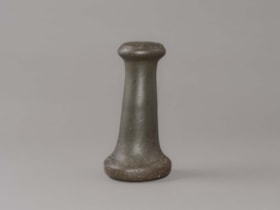
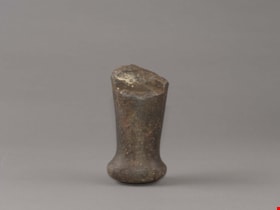
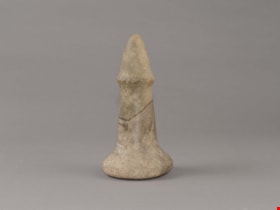
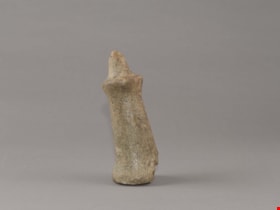
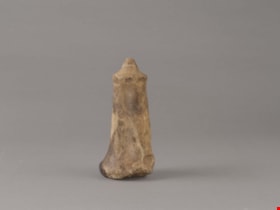
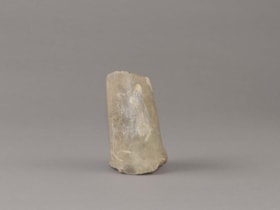
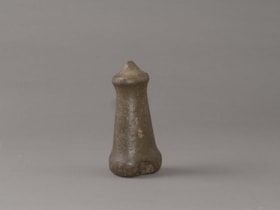
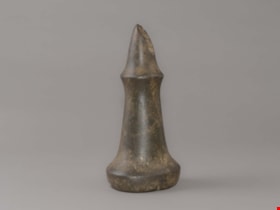
![Interview with Ellen and Bill Schwartz, [1969-2023] (interview content), interviewed 15 May 2023 thumbnail](/media/hpo/_Data/_BVM_Sound_Recordings/Oral_Histories/2023_0016_0006_001.jpg?width=280)
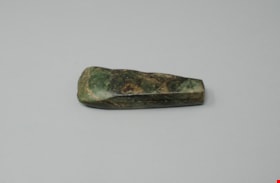
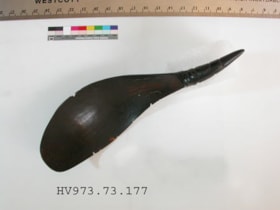
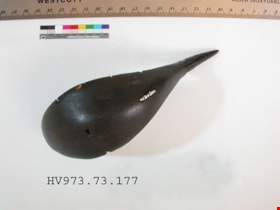
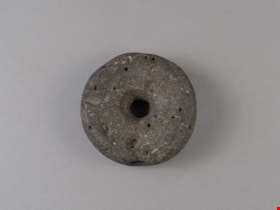
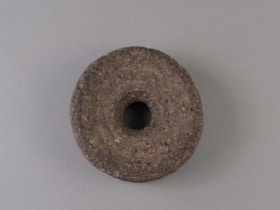
![Interview with Joanne Smith, [1986-2023] (interview content), interviewed 11 May 2023 thumbnail](/media/hpo/_Data/_BVM_Sound_Recordings/Oral_Histories/2023_0016_0005_001.jpg?width=280)
